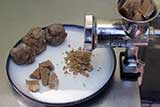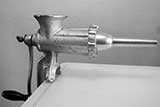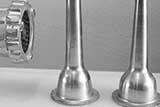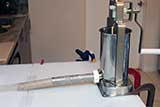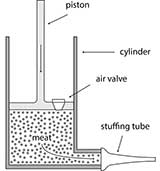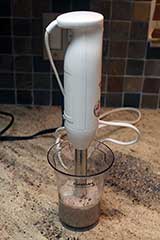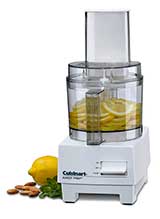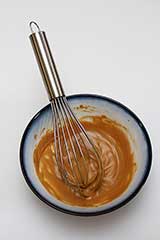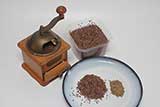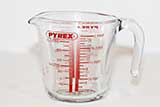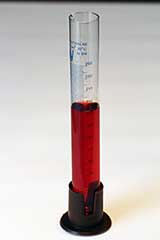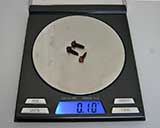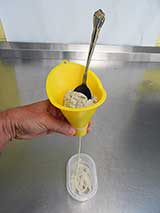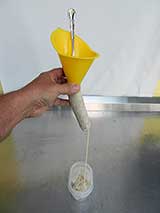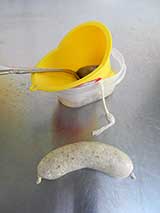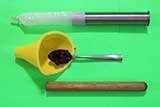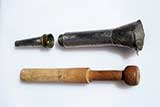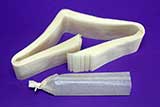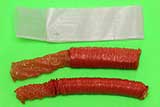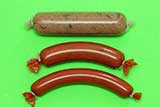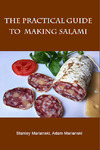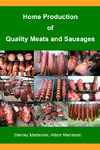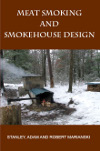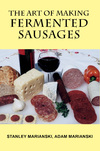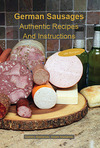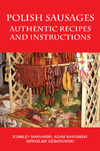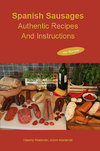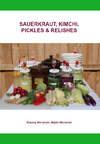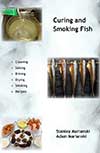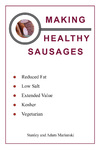Meats and Sausages
Equipment
Grinder
Grinders are tools that are indispensable for making meat sausages, however, they are less important for making vegetarian sausages. Most vegetarian sausages are made from precooked grains or soaked materials that do not need to be ground, only occasionally a recipe will call for grinding wheat gluten.
Sausage Stuffer
The sausage stuffer is probably the most important tool that you should carry. Sausages must be filled very firmly and the stuffer is a must tool for the job. There are two choices: a manual grinder with a stuffing tube attachment and a piston stuffer.
Although a manual grinder with an attached stuffing tube is an awkward arrangement for a single person to handle, it works surprisingly well with vegetarian sausages. It is a good machine to process smaller batches of sausages in the range of 2-5 pounds. You may start with a manual grinder, but if you intend to make 5 pounds of sausage or more, upgrade to a 5-pound piston stuffer.
Cutting and Blending Equipment
A good knife and food processor/blender will handle general tasks and make emulsions. Don't underestimate the power of a manual whisk; it is a wonderful blending tool and is easy to clean. A small 100 g (3.5 oz) test sausage may call for 50 g emulsion. There is no way that even a small processor will process such a small amount of food as its knives are positioned too high. You can, however, do it easily with a whisk. In addition, the whisk works slower, so you can introduce last-minute changes and see the changes as they occur.
Usually it is possible to purchase ground seeds such as flaxseeds, however, some seeds for example poppy seeds may require you to grind yourself.
100 ml measuring cylinder is a must-have tool for control of small amounts of liquid. Having a second, smaller 10 ml capacity will be helpful too.
Making Test Sausages
Let's say you come up with a new idea for a sausage. Although the composition might seem unusual at first glance, you will never know how it will taste until it is made. It will not be practical to cook 5 pounds of oats and mix them with 1 pound of honey, a half pound of raisins, and so on. However, you can make a test sausage within 30 minutes, and this will prove your recipe.
Assembling a grinder and stuffer to make 3.5 oz of test sausage is not practical as it requires much cleaning. Attaching the casing to a suitable funnel and stuffing the sausage is simpler.
A small amount of sausage can be stuffed faster than assembling the stuffer. The clean-up is a snap and no problems with storage space. After a few sessions, you learn when to release the casing when pushing down the pusher stick. This is how the sausages were stuffed in the past.
Casings
Casings are divided into two categories:
- Natural - pigs, sheep, goats, cattle and sometimes horses. Kosher sausages will not be stuffed into hog casings.
- Artificial - collagen, cellulose, or even plastic. Artificial casings from animal collagen can be edible, depending on the origin of the raw material. Collagen casings with a diameter of 32 mm or more are usually not edible.
Collagen casings are produced from the collagen in beef or pig hides and the bones and tendons. It can also be derived from poultry and fish. In any case, they do not meet the requirements of pure vegans.
Cellulose, usually from cotton linters or wood pulp, is processed to make viscose, which is then extruded into clear, tough casings. Cellulose skinless casings are manufactured in shirred sticks that do not require soaking. They are highly permeable for excellent smoke absorption and color. They have tiny little holes that allow smoke and moisture to go through. This, in our experiments, created a problem as the flour was leaking through.
Synthetic casings are made of synthetic thermoplastic materials and are mechanically strong.
The Sausage Maker Inc., offers a variety of casings suitable for vegetarian sausages.
Vegetarian sausage recipes are listed in the Sausage Recipe Index.

